The Rewilding Rhodopes team have been releasing red and fallow deer in the local landscape for 10 years. As the size and range of deer populations in the Eastern Rhodopes continue to increase, so the positive impact on biodiversity and local food webs will continue to increase too.
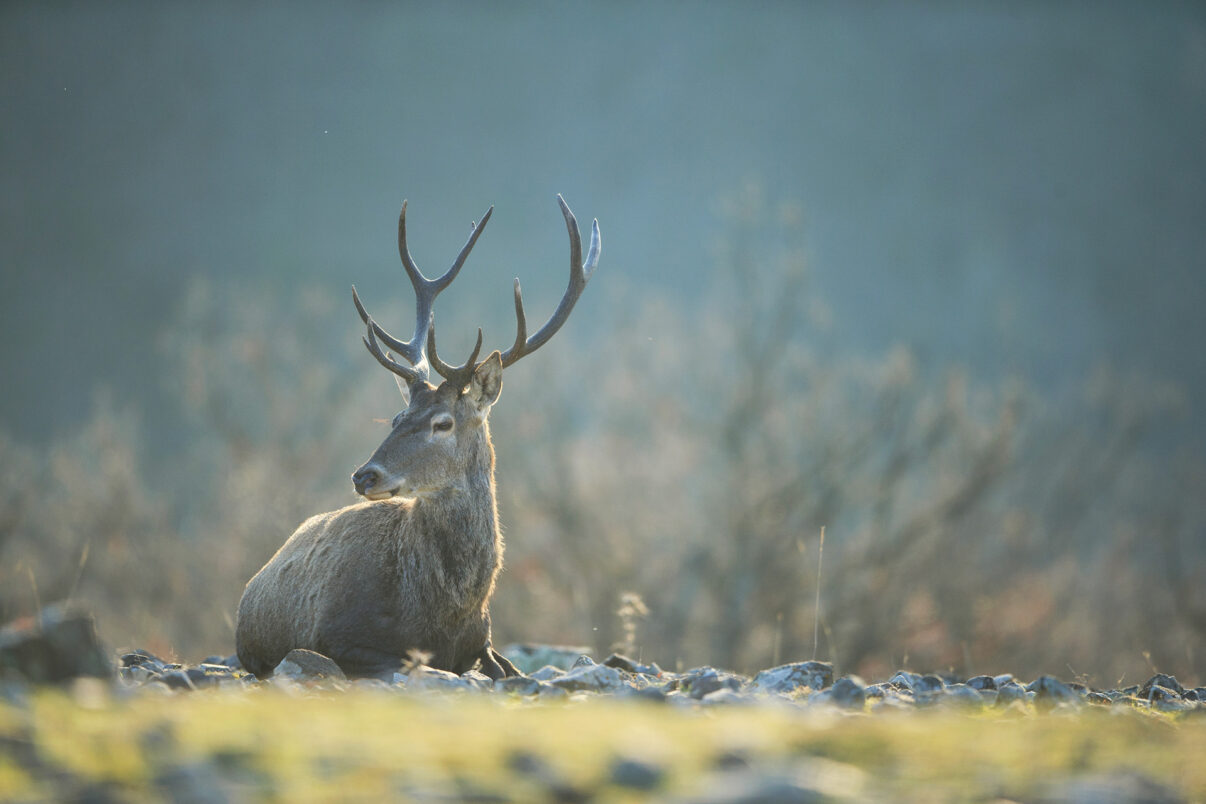
Strengthening the circle
In collaboration with Rewilding Europe and local partners, the Rewilding Rhodopes team have been working for many years to restore the so-called “circle of life” in the Rhodopes Mountains rewilding landscape in Bulgaria. Rewilding efforts have seen populations of keystone herbivores such as red and fallow deer, European bison and wild horses reintroduced and restocked, with benefits for local populations of carnivores and scavengers – such as vultures, wolves, golden eagles, and white-tailed eagles – and a wide range of other species. Underpinned by wildlife comeback, the growth of nature-based tourism is also benefitting local communities.
Over the last 10 years, in collaboration with local communities and hunting associations, the Rewilding Rhodopes team have released a total of more than 1000 fallow and red deer, with more releases planned. These animals are monitored with GPS transmitters, camera traps, and field studies.
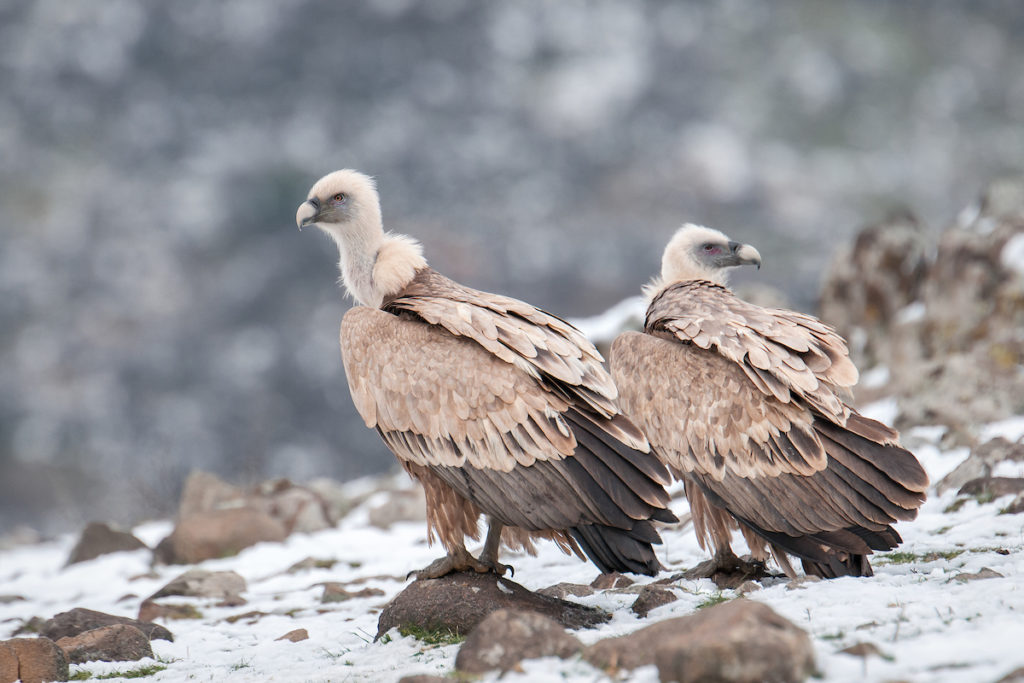
Milestone achievement
A new report by Rewilding Rhodopes rewilding manager Stefan Avramov shows how deer reintroduction and restocking efforts have seen red deer expand their range in the landscape ten-fold, from 100 – 150 square kilometres (km2) to more than 1500 km2. The range of fallow deer has increased around five-fold – from 350 km2 to more than 1500 km2. This ongoing range expansion is complemented by natural recolonisation of the landscape by red deer moving eastward from the Western Rhodopes, and fallow deer expanding from the Studen Kladenets Reserve, where the species was reintroduced in the 1960s.
“These results represent a milestone for our long-term rewilding efforts,” says Avramov, who oversees deer population restoration in the landscape. “Moving forwards we are aiming to build on these achievements further, with more deer releases in strategic locations. In collaboration with local partners, our aim is to restore red and fallow deer populations across the entire Rhodope Mountains landscape. As the size and range of deer populations continue to increase, so the positive impact on biodiversity and local food webs will continue to increase too, as we work towards a wilder, healthier landscape governed by natural processes.”
Supporting vulture comeback
Studies have shown that carcasses of fallow deer now make up nearly 9% of the food of griffon vultures in the Rhodope Mountains, with this number expected to increase in the years ahead.
The Rhodope Mountains rewilding team and local partner the Bulgarian Society for the Protection of Birds (BPSB) have been supporting the comeback of griffon vultures in the Rhodope Mountains since 2016, mainly by improving the availability of natural prey, and by working to reduce mortality caused by factors such as poaching, poisoning, and collisions with power lines. The beneficial impact of these efforts is reflected in the ongoing growth of the local griffon vulture population, which in 2024 had reached 138 pairs. The partners also began an ongoing programme to reintroduce cinereous vultures in the landscape in late 2022, with two releases to date.
The carcasses of large, free-roaming wild herbivores such as deer are free from veterinary medicines which are frequently found in the carcasses of livestock, which are currently a major food source for vultures in the Rhodope Mountains. These medicines can be lethal for vultures and other species which feed on livestock carcasses.
“Moving forwards, I believe the carcasses of wild herbivores such as deer will constitute an ever larger part of the diet of vultures and other scavengers,” says Stefan Avramov. “This is good news, because in an ideal world vultures in the Rhodope Mountains and across Europe would feed exclusively on wild carcasses, which represent a safe and sustainable food source. We have seen wolves and vultures feeding on fallow deer carcasses on camera trap images, and we have also seen red deer that have been killed by wolves.”
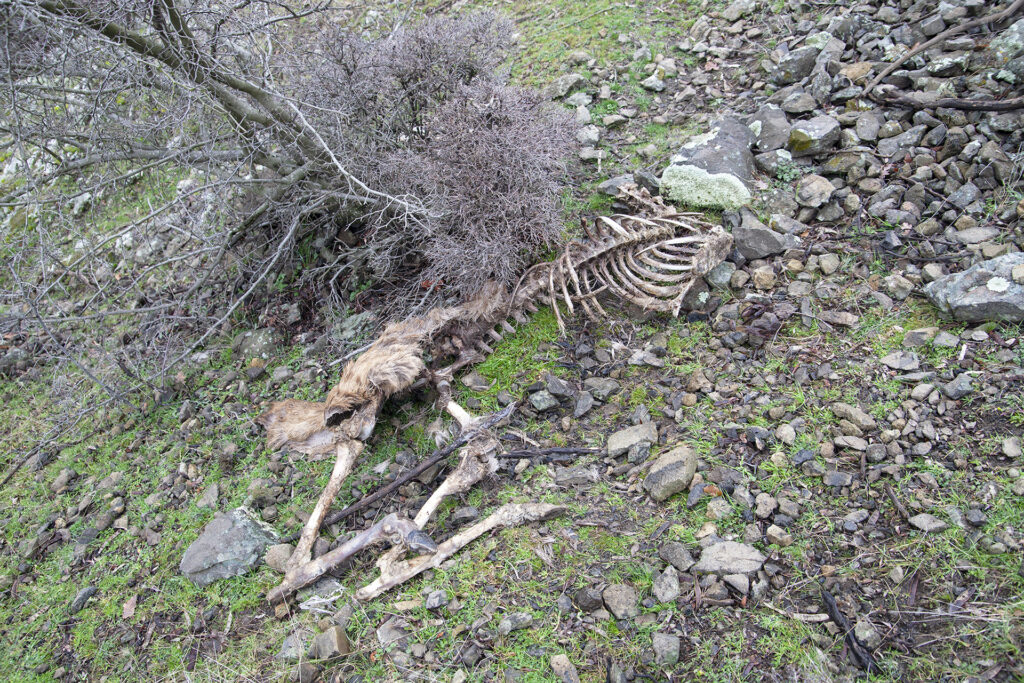
Enhancing biodiversity and coexistence
By enhancing natural grazing, the recovery of fallow and deer populations in the Rhodope Mountains is promoting wider biodiversity. As they graze and browse on grass and bushes, the deer help to maintain a semi-open, mosaic landscape, which supports a huge range of wildlife species, from orchids to tortoises.
The fact that wolves, which as a keystone species helps to maintain ecosystem balance, are increasingly preying on fallow and red deer, is good news too. This type of complete food chain – with deer, wolves, and a range of vulture species feeding on wolf kills – is currently unique in Europe. Wolves are found across the Rhodope Mountains, with their main prey base currently comprising sheep and goats. Increasing predation on deer means less predation on livestock, which reduces potential conflict between wolves and livestock owners and managers.
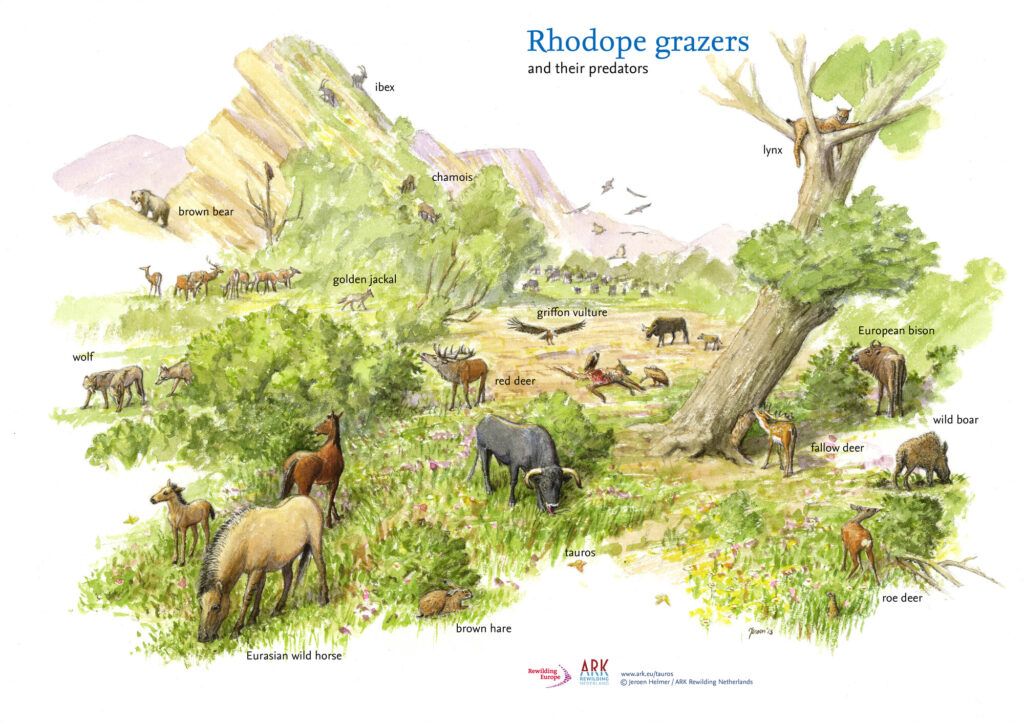
Productive collaboration
Deer releases by the Rewilding Rhodopes team are carried out in close collaboration with local hunting associations and provide a model for cooperation between these initially unlikely partners. Hunting units and partners are obliged not to hunt deer for at least five years following the last release in their hunting area. No hunting association has begun deer hunting following releases by the team, which in some cases means no hunting has been carried out for 10 years.
“Generally speaking, hunters are very interested in and supportive of deer recovery here,” says Stefan Avramov. “They know that if they want to hunt later, deer populations must be protected and allowed to grow first.”
The Rewilding Rhodopes team will continue their collaboration with all the hunting associations in the landscape to improve deer monitoring and management after hunting bans have ended. This will ensure reintroduced and restocked deer populations continue to increase and expand their range.
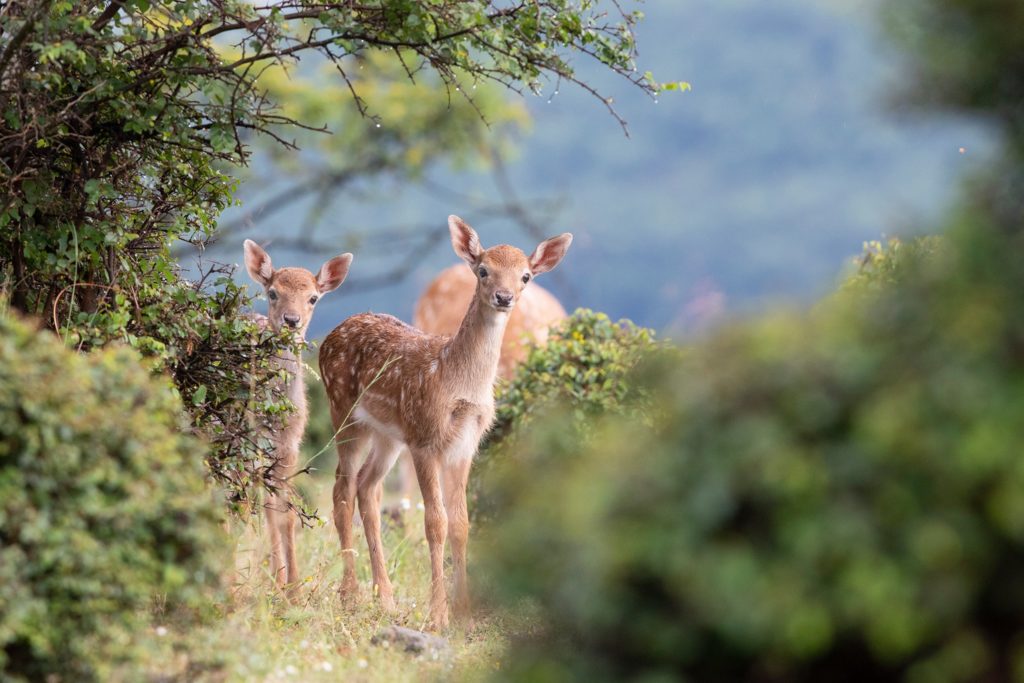
Invaluable support
Rewilding Europe’s work in our rewilding landscapes is supported by a wide range of highly valued partners. We would particularly like to acknowledge those providing core funding – notably the Ecological Restoration Fund, the Dutch Postcode Lottery, WWF-Netherlands, and Arcadia. Their longstanding support plays a critical role in enabling us to deliver and scale up rewilding impact.
